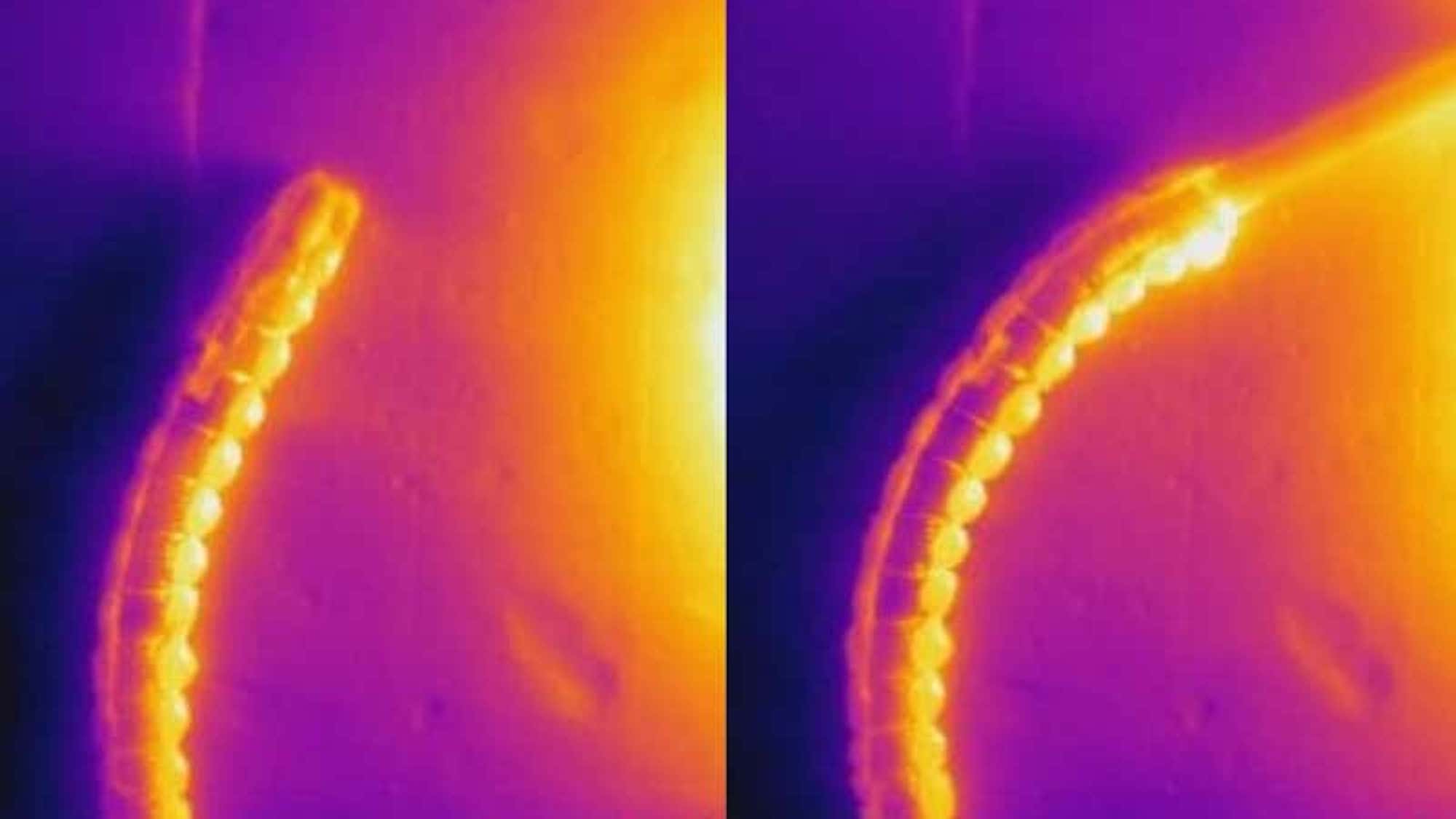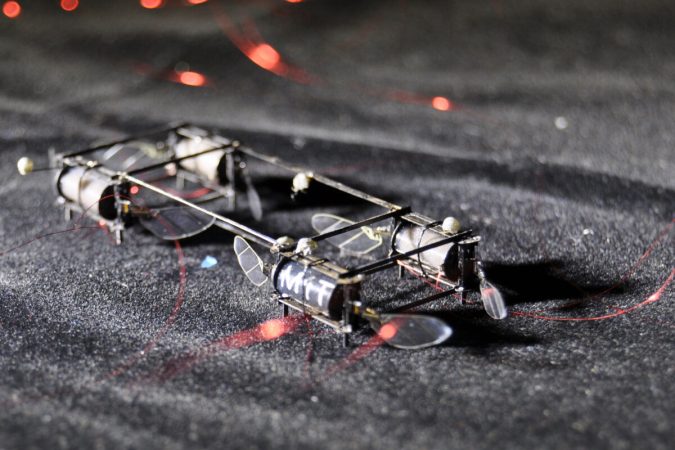

Robots are increasingly drawing from a menagerie of animal inspirations, but one of the newer designs takes its novel inspiration from vegetation. As spotted on Tuesday by New Scientist, researchers at the University of California Santa Barbara have created a robot capable of mimicking vines and roots in their ability to locally detect and move towards sources of moisture. In this case, however, Charles Xiao and his cohort honed their creation to grow towards the direction of heat.
The two-meter-long, tendril-like bot is composed of a pair of thin Mylar bags filled with a refrigerant fluid called Novec 7000 which are separated by an insulating, low-density polyethylene “spine.” Each Mylar sleeve is divided into 4.5 centimeter segments, which expand wider while shrinking in overall length once their internal refrigerant liquid begins evaporating past its comparatively low boiling point of 93F.
[Related: This Korean robodog proves running on sand isn’t just for ‘Baywatch’.]
When a warmed side’s segment expands and contracts, its complimentary portion on the other side of the robot’s spine lengthens in response, thus arcing the overall device towards the heat source. According to the team’s research, their robot can already navigate around simple obstacles, as well as bend backwards towards heat even if pointed in the opposing direction. Another feature of the team’s root-inspired robot are its eversion capabilities, the process in which soft robots can extend or unfurl from its interior—New Scientist aptly compares the movement to an inside-out dress shirt sleeve being pushed out by an arm.
Ironically, the vine bot’s attraction to warmth could be utilized to quell the heat source itself. Xiao and his team envision future iterations combined with hoses to funnel water or inert gasses into dangerous situations such as wildfires to help put out flames at minimal risk to humans. The device’s cheapness doesn’t hurt, either—the team estimates deployment could cost as little as $1 for every three meters of the uncoiling robot. Next up for the design is making it speedier, as well as customizing the internal liquid to change at what temperatures the robot begins to react.















